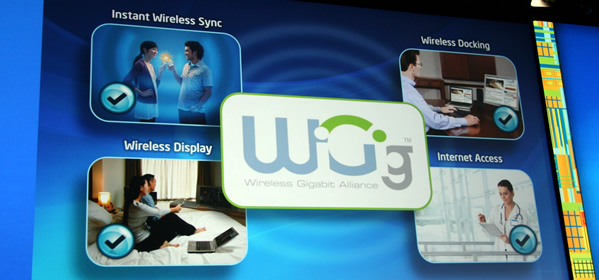A new wireless standard promising blazing speeds over short distances was recently adopted by the IEEE. Known as 802.11ad. The ratified standard will deliver 7Gbps speeds over 60GHz frequencies and should appear in consumer electronics as soon as next year. And in case you're wondering, WiGig is the consumer-friendly marketing name which will encompass 802.11ad and future revisions.

We first mentioned 60GHz Wi-Fi In 2008. Interestingly though, 802.11ad isn't aimed at replacing your wireless network; rather, it hopes to compliment your existing Wi-Fi by providing an impressively fast, direct link between devices. Possible applications include device docks and wireless peripheral interconnects.
Unfortunately, what makes 802.11ad so incredibly fast -- its 60GHz frequency -- also serves as the reason it won't be supplanting your Wi-Fi network. Increasingly high radio frequencies (I.e. shorter wavelengths) tend to be increasingly poor at penetrating solid objects like walls, desks and bookcases. Not surprisingly, higher frequencies also tend to be useful only at shorter ranges -- that is unless someone intends to slow-cook unfortunate passersby.
While the 2.4GHz and 5GHz signals doled out by 802.11g/n and 802.11ac may provide reasonable coverage for your entire dwelling, it's unlikely 60GHz and higher frequencies will ever become an adequate substitute. However, for line-of-sight and short-distance transmission applications, 60GHz and up offer tremendous performance potential: 4Gbps links are likely just the beginning.
Already on the 802.11ad bandwagon is Dell with its upcoming Latitude 6430u Ultrabook . Additionally, chip makers Marvell, Qualcomm and Atheros are all working on chip implementations, some of which cram 802.11ac and 802.11ad capabilities into a single module. Such chips will grant devices simultaneous access to 2.4-5GHz and 60GHz bands.
https://www.techspot.com/news/51343-7gbps-wireless-on-the-way-wigig-80211ad-adopted-by-ieee.html